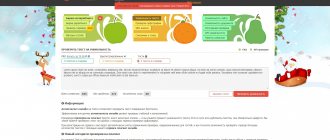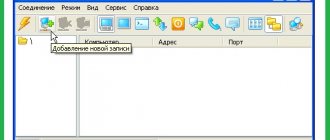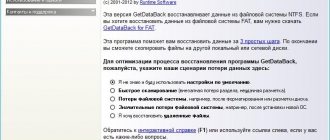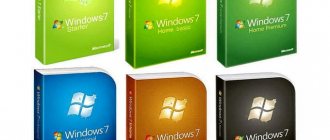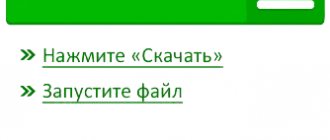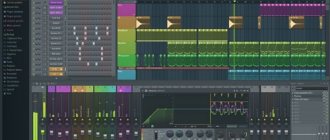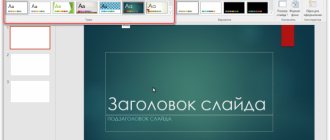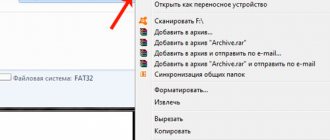Review last updated: 06/01/2018.
What is Puzzle English for and what does it consist of?
When Puzzle English first appeared, its main goal was to develop listening comprehension of English through exercises. This is still the main function of the service, but several others have joined it. Let's look at what is included in Puzzle Englihs and what it is for.
- Assignments - listening exercises (the same basic function), grammar, written translation. I especially like Audio Puzzles and Video Puzzles.
- Films – films and TV series with subtitles in English and Russian. Convenient player: by clicking on a word in the subtitles, you immediately see the translation. The “Movies” section is located on a separate Puzzle Movies website.
- Courses – interactive step-by-step courses for levels from “zero” to intermediate; there is a separate course for young children, a course for travel and a course for business English.
- Podcasts - audio podcasts by different authors related to learning English, supplied with text, can be downloaded.
- Games – simple games for language learning, including multiplayer quizzes.
- Words – exercises for memorizing words, personal dictionary.
- Personal plan - if you don’t know where to start, the program will create a lesson plan, you just need to select goals and suitable days.
- Other – a section called “Other” includes Songs, Tests and Vitamins (mailing archive).
In my opinion, the most interesting are the first four sections: Assignments, Movies, Courses and Podcasts. Other sections - Games, Words, Personal Plan - are already seasoning for the main dish.
Puzzle English is a paid service, but each section is paid separately. This is convenient because the sections have different tasks and not everyone will need them all at once. A beginner, say, will be interested in Assignments, and they can be paid for separately, without overpaying for Movies, Games, etc. If you are interested in all services, courses, then there is an “All inclusive” tariff, which gives access to all sections forever, including number that has not even appeared yet.
Now let's take a closer look at the most interesting features of the service.
What is Puzzle English for?
This site is great for learning to perceive correct English speech by ear, as well as for quickly expanding your vocabulary. Therefore, the main purpose of Puzzle English is that it trains the listening comprehension of English speech, that is, the main emphasis is placed on listening. For this purpose, the site has more than 2,000 entertaining and educational audio and video clips.
There are also grammar exercises. But the interface itself is very convenient - everything is divided into categories - pronouns, adjectives, verb tenses, etc.
There are also short but funny video lessons on the theoretical part and for understanding spoken language. During the lesson, young teachers entertain students as best they can, which users really like. After all, there is nothing better than learning while having fun. Examples of phrases and sentences are taken from famous songs and films. And under the video there will definitely be a text version of the lecture. For example, this is what exercises on demonstrative pronouns this and that look like:
I really like the “Clips” section, which is constantly updated and expanded. The user selects the type of content that he likes - speeches, TV series, interviews, songs, TV shows - and gets into the library of articles. Here you can also select the accent (American, British, Australian, etc.) and difficulty category.
The point of the main exercise is as follows:
- watching a video clip;
- listening;
- constructing a sentence from the given words.
During this exercise, the student trains, first of all, listening comprehension of English speech, studies and uses in practice a variety of grammatical structures, learns to construct sentences in English, and expands his vocabulary. To do this, a technique is used to study vocabulary in the context of phrases and sentences.
The user can also include a collection of educational videos explaining grammar on a specific topic. After watching the video, you need to do a practical exercise to consolidate the material. In addition, there is a function where an exercise on a given topic can be repeated after a selected time.
You repeat this type of work on a video 20-25 times, and in the end you will develop practical skills in the vocabulary and grammar of the topic you have chosen.
Puzzle English tasks
Let's start with the Tasks. They include: audio puzzles, video puzzles, lessons, a simulator and broadcasts. Audio puzzles and video puzzles are exercises for listening (listening comprehension), lessons, a simulator and translations for grammar, vocabulary and translation.
1. Audio puzzles - listening for beginners
Audio puzzles are the simplest exercises for understanding English speech by ear, suitable for beginners. The announcer pronounces the phrase very clearly, and you need to assemble it, like a jigsaw puzzle, from individual words.
All tasks are based on assembling phrases from puzzle words, hence the name of the program.
To complicate the task, select the “Typing on the keyboard” mode, then the puzzles, which themselves serve as a hint, will disappear, and the answer will need to be typed on the keyboard. You can listen to audio in slow motion by selecting the desired speed.
Please note: under each phrase you can leave reviews or comments - for example, to teachers, why this particular word was used and not another, what such and such a phrase means, etc. This is very convenient. You don’t just study with the program, you are helped by living and quite reasonable people. All words from the exercise can be entered into your dictionary.
2. Video puzzles - listening using videos
This task is more difficult. Here you are not listening to a speaker with a precise pronunciation, but to real people. Select a video and watch it with subtitles, then do the exercise.
The player is very conveniently made: while watching, you can easily turn on and off Russian and English subtitles, that is, complicate and simplify your task. Also, if you click on an English word directly in the subtitles, a small window will pop up with a translation and even examples of the use of this word in other videos.
By clicking on a word, you can see it in another video and in another context.
After watching the video, do the exercise: listen to the recording phrase by phrase again and assemble puzzles from the words.
By clicking on the “Dictation” button, you will hear the phrase read out by the announcer - much more clearly than in the video.
It's not as simple as it might seem. The clips are taken from TV shows, music videos, films - people speak like real living people (that is, they are difficult to understand), and not like robot speakers from audio supplements to textbooks. In addition, the vocabulary itself in the videos can be quite difficult. Even non-newbies will have a lot to learn.
3. Lessons
This section includes more than 700 English video lessons recorded by the Puzzle English team over several years. The guys did a great job, talking in an accessible way about all grammatical topics, many nuances of vocabulary, idioms, and cultural features. Many lessons include interactive exercises.
4. Simulator
A simulator for consolidating grammar. Everything is the same as in textbooks, collections of exercises, but in an interactive form: insert the missing word, put the verb in the required form, etc. The inconvenience is that the program itself selects which topics to study, not allowing you to choose yourself.
5. Translates
Quite interesting exercises for translation from Russian into English. A small text is given in Russian, it needs to be translated into English piece by piece. Different translation options for the same sentence are not ideal, but are taken into account. The exercise will appeal to those who gravitate toward the old-school grammar-translation approach. I have a separate review about broadcasts.
How to use Puzzle English
You need to register on the website puzzle-english.com (you can log in using VKontakte). Next, you can select the type of activity - the interface is intuitive.
How to learn English with video puzzles
Select “Video puzzles” in the “Tasks” menu
Menu Puzzle English
Select a video from the catalog that suits your interests (news, song, film, etc.). When selecting, you can also filter videos by emphasis and difficulty level.
Listen to the video (with or without subtitles), add unfamiliar words to the dictionary.
Complete the task of assembling a puzzle: they will pronounce phrases to you, and you will write them down (in puzzle pieces)
Here's how it's done:
How to learn grammar
- Select “Grammar” from the “Tasks” menu
- Select a video. They will explain the grammar to you in Russian.
- After that, you complete the task of assembling the puzzle.
Here is a detailed description of how to work with grammar exercises:
Movies on Puzzle Movies
Movies are the most difficult, but also the most interesting section; it is presented on a separate website Puzzle Movies. It includes films, cartoons, series and TV shows.
The interface designed for film classes is impressive:
- subtitles in both languages - you can turn on English or Russian separately, or leave both.
- possibility of phrase-by-phrase viewing,
- ability to save words to a personal dictionary.
Some of the series are worked out in more detail, they include:
- full script text,
- video comments from teachers on interesting phrases,
- dictionary for the series,
- Exercise tests right while watching.
The creators have done a colossal job, I, as they say, take my hat off to them.
Courses: Teacher Method and Puzzle Academy
Courses include the “Teacher Method” and “Puzzle Academy” courses. “Teacher Method” is an interactive step-by-step course for levels from zero to intermediate. “Puzzle Academy” – video courses with native-speaking teachers for intermediate levels and above. You will have the opportunity to “attend” the lessons and work with the students.
1. “Teacher Method” - a detailed course for beginners
“Teacher's Method” is a completely autonomous service that is practically not connected with the main Puzzle English. If other sections (series, video puzzles, etc.) are designed for students of different levels, then the “Teacher Method” is intended for beginners. It includes five courses + a separate course for young children.
- Five courses of the “Teacher Method” - they are numbered as course one, two, three, four and final. In essence, this is one large course for beginners, divided into five stages. Don’t be confused by the word “final” in the name of the course; all five stages are approximately within the Beginner – Elementary levels.
- I would especially like to highlight the “Children’s course” , intended for children aged 6 – 10 years. The children's course is intended for children, and the material is presented in a playful way, in the form of stories involving the characters Miss Betty, Johnny, Kate and Peter the owl.
The training is structured very clearly. By going to the “Teacher Method” section, you will see a route with lessons. Lessons are divided into topics. The first few lessons are available for free, but with a free subscription you can take them in demo mode with a limit of 1 lesson per day. I purchased one of the courses for review, so I have all the topics in the level open.
This screenshot was taken in a mobile application on Android. This theme is not available in the free version.
All you have to do is go through lesson after lesson and pass an exam at the end - that's all. The lessons themselves are structured quite differently. First, the teacher briefly explains the theory, then you go through a series of exercises.
Julie explains the theory.
The exercises include tasks for memorizing words, understanding words by ear, spelling, and composing phrases from words. For example, in the exercise in the picture below you need to make a sentence by putting the words in the correct order.
There are also more unusual exercises. For example, for many beginners it is a big problem to distinguish the sound of similar words like: sheep - ship, man - men, slip - sleep. At school I couldn’t tell them apart at all and pronounced them the same
